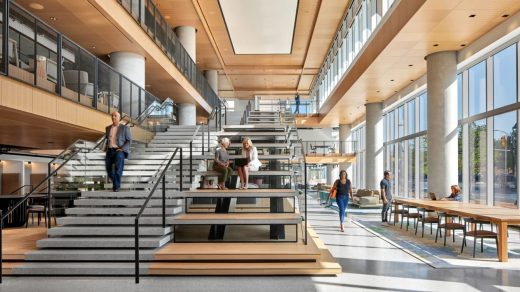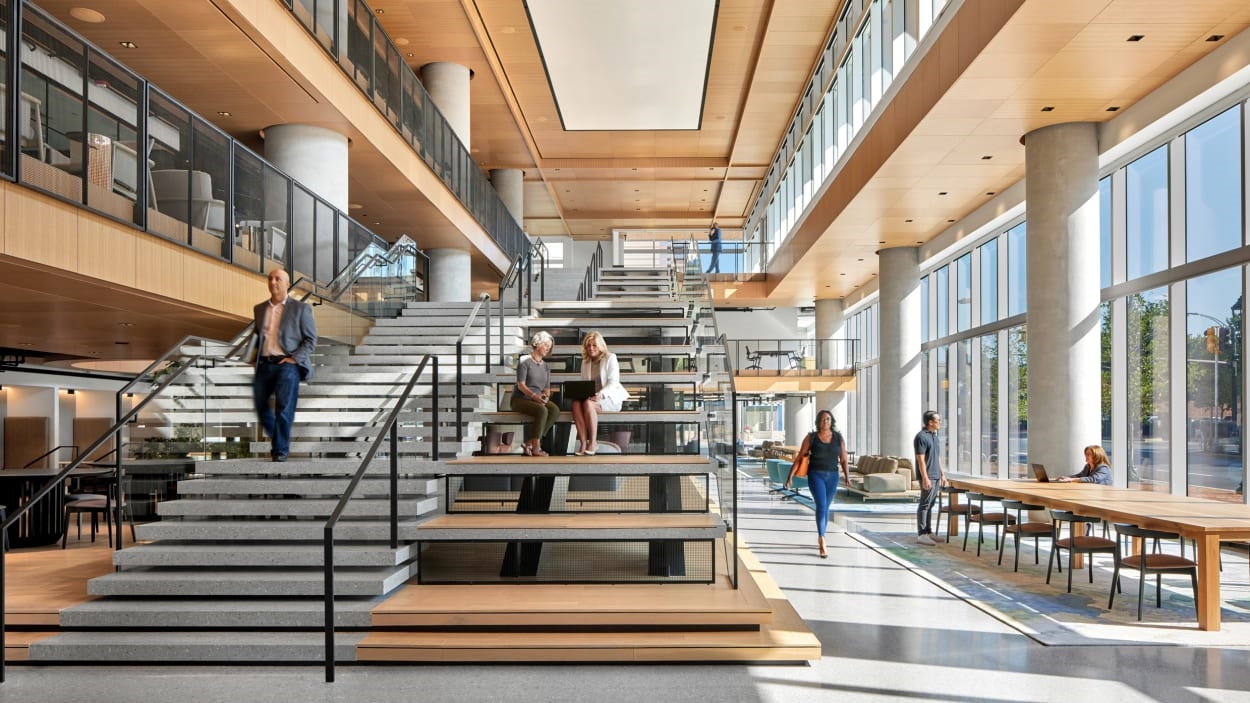Marriott’s new HQ is designed to feel like one of its hotels
For a company focused primarily on creating welcoming buildings in appealing places, hotel giant Marriott’s corporate headquarters was about as off-brand as possible. The six-story, 1 million-square-foot behemoth was a bland officescape plopped in the office-park suburbs of Bethesda, Maryland—an unwelcoming building in an unappealing place. “It was, quite candidly, a building at the end of its life,” says Stephanie Linnartz, president of Marriott International. “It just wasn’t the environment for the future.”
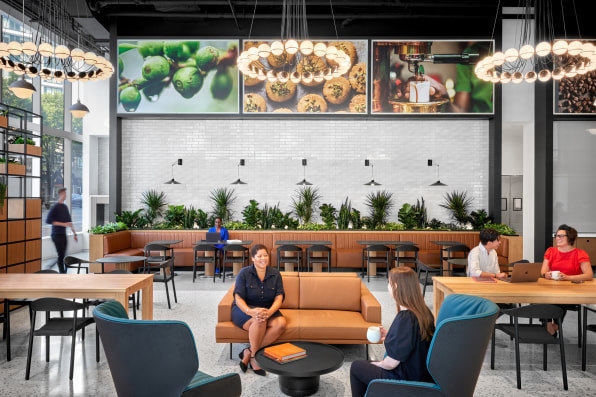
So when the hotel chain began planning its own future, it decided to create a corporate headquarters more reminiscent of the nearly 8,200 hotels it operates in more than 130 countries around the world. Its new 21-story, 785,000-square-foot space in the center of downtown Bethesda is a hospitality-forward, amenity-rich building. A café is open to the public on the ground floor and a three-story atrium in the center of the building looks up at a food hall for employees and an entire floor dedicated to health, wellness, and childcare. “It seems more like a hotel lobby than an office building,” Linnartz says.
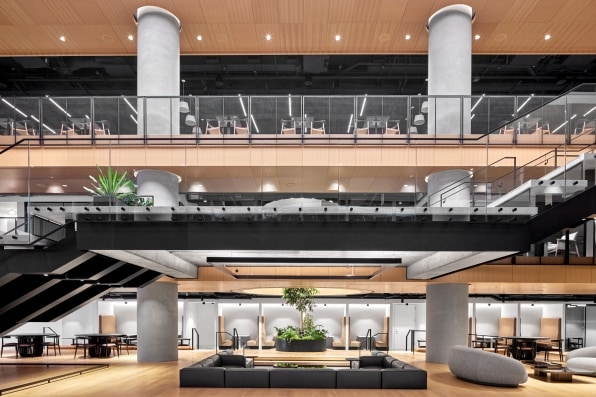
To design the building to better align with its corporate mission, Marriott worked with the global architecture-and-design firm Gensler. The building is not just a billboard for what the company does, but also a representation of how the company functions.
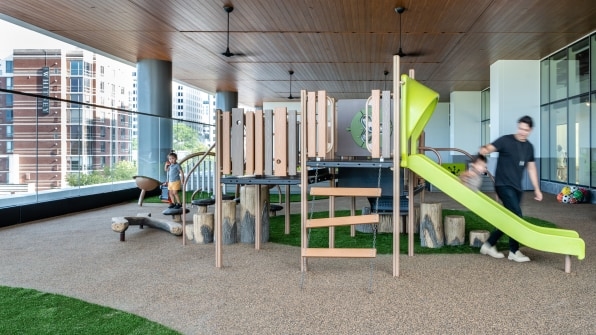
Collaboration was a primary goal of the design, turning the formerly horizontal headquarters into a building that could more easily engender cross-departmental work, says architect Jordan Goldstein, Gensler’s co-firm managing principal. That involved peppering communal spaces throughout the entire building, using couches, lounge chairs, and even a conversation pit. About a quarter of the furniture on each floor is meant for communal use, Goldstein says. Each floor also features a promenade-like space, which the designers dubbed an avenue, where informal meetings and collaboration can occur. Those might be small nooks for one-on-one conversations, whiteboard walls with stools for brainstorming, or pantry spaces where colleagues can chat over a cup of coffee.
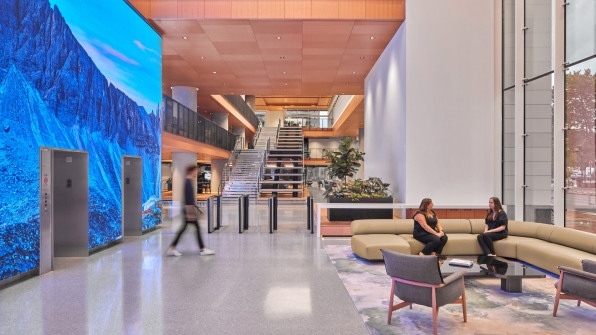
That notion also extends from floor to floor, with attention paid to the ways people move up and down throughout the building—even designing in more reasons for them to do so. One example is the top floor of the building, which has been set aside as an “associate growth center.” Rather than dedicating this prime real estate for the company’s top brass, it’s intended to be used mostly by the nonexecutive staff, and features an event space, lounge areas, and room for training and professional development. Sliding walls open to a large rooftop patio where staff can have lunch after picking up food from the second-floor food hall.
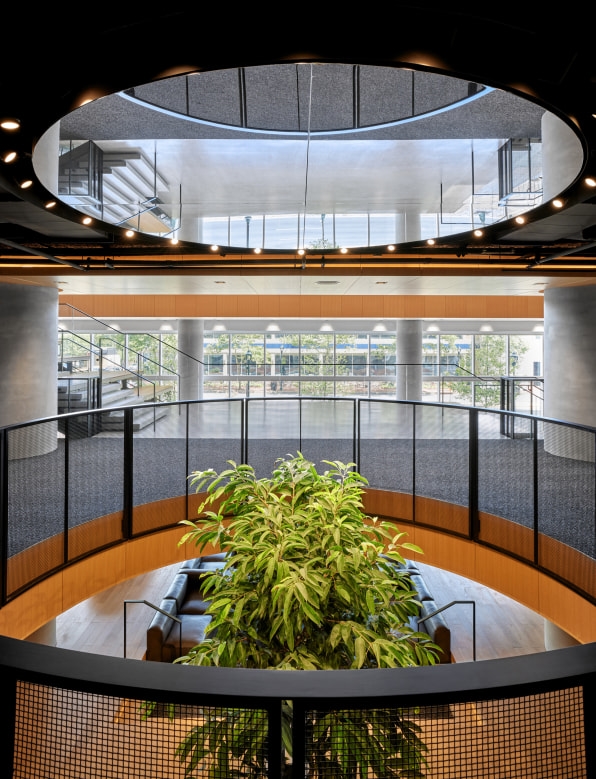
The executives are moved down to the 15th floor—an elevator transfer floor, no less. Putting the top brass in this typically unappealing part of the office was a deliberate choice, in the spirit of collaboration. The more regular workers and higher-ups cross paths, the thinking goes, the more likely they’ll be to share ideas and improve company collegiality.
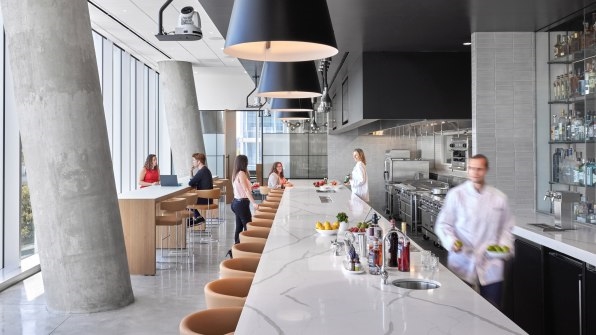
“It’s a vertically integrated campus where, through the motion of going from floor to floor, you interact with each other,” Goldstein says. “The notion is that amenities, if done right and woven throughout the workplace, can make the workplace a destination rather than an obligation.”
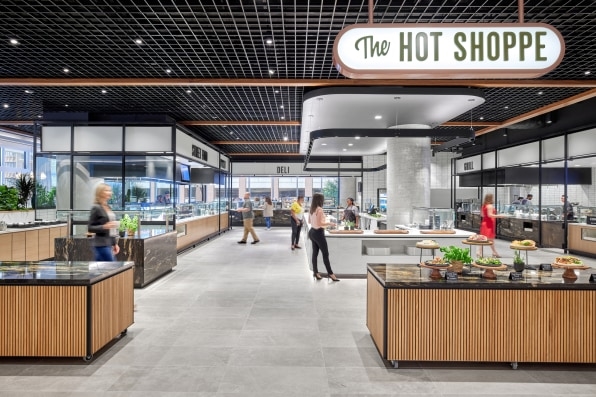
The building is also a test space for how Marriott’s hotels look and function. The building’s fourth floor includes a 4,000-square-foot test kitchen and bar, where new dishes and drinks are developed. There’s also an innovation and design lab, where the company’s designers create and mock up new room designs for the various hotel brands under Marriott’s umbrella.
The 8,000-square-foot space is a cross between an artist’s workshop and a construction site, with designers sketching out room concepts and building scale models out of foam core. Partnerships with other companies, like the robotic furniture maker Ori, can also be explored there. The space is flooded with natural light, a notable improvement from the last headquarters’ design lab, which was wedged into the basement. “It actually used to be where we kept all the old records for our legal department,” Linnartz says. “It was not cool.”
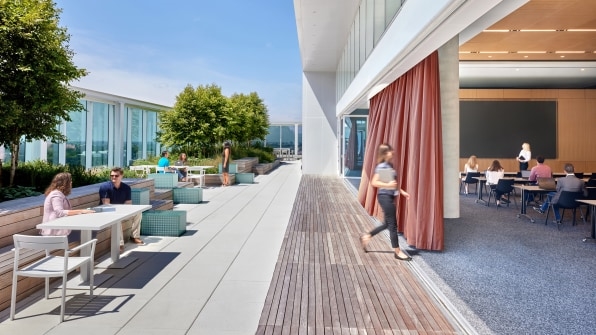
The ideas being designed and built in the lab aren’t just theoretical. One of the more unique aspects of Marriott’s new office is that it’s located next door to one of its hotels. The company has leased back 13 of the rooms in the hotel and is using them as test spaces where ideas from the lab can take full form. Hotel guests can even stay in these rooms, and provide feedback on the experience of the new designs.
This combination of test labs, collaboration-focused workspaces, and employee-centric amenities is Marriott’s bet that the future of its globally dispersed business still needs a beating heart. Linnartz says that since the office had its grand opening earlier this fall, it’s already proving to be a draw for a post-pandemic workforce. “This building is helping us attract talent,” she says.
(18)

